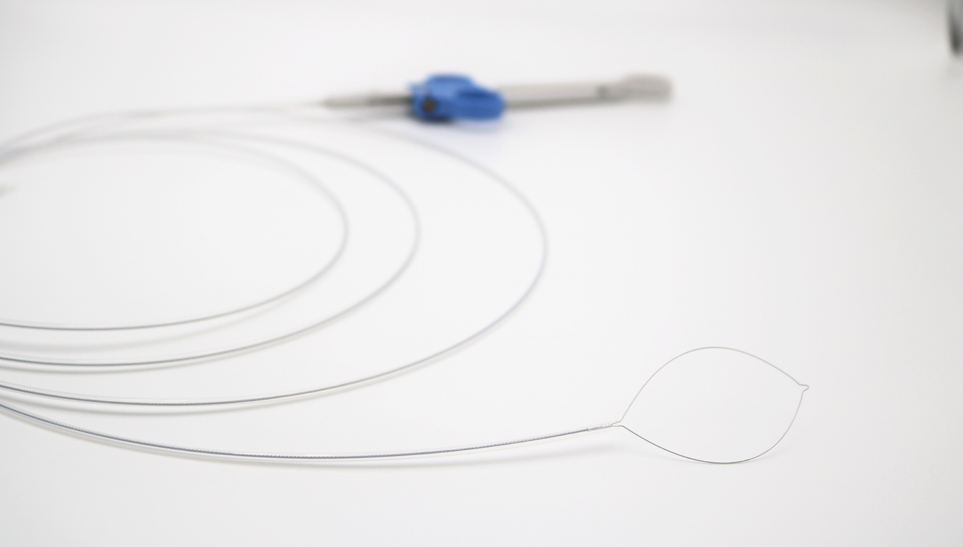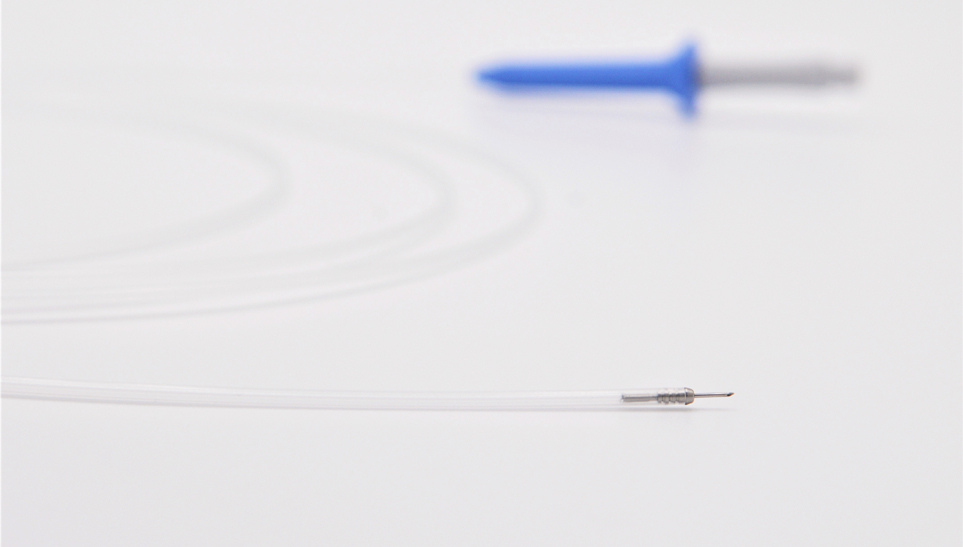Specification of Ligation Device
Ligation loop (Disposable)
| REF | Open Diam.
(mm) | Height
(mm) | Units/Box |
| Loop-15B0 | 15 | 36 | 5 |
| Loop-20B0 | 20 | 40 |
| Loop-30B0 | 30 | 55 |
| Loop-40B0 | 40 | 70 |
Delivery System (Reusable)
| REF | Effective Length
(mm) | Minimum Working Channel (mm) | Units/Box |
| LD-165D0 | 1650 | 2.8 | 1 |
| LD-195D0 | 1950 |
| LD-230D0 | 2300 |
Preassembled (Disposable)
| REF | Open Diam.
(mm) | Effective Length
(mm) | Units/Box |
| Loop15B0-LD165D0 | 15 | 1650 | 1 |
| Loop20B0-LD165D0 | 20 | 1650 |
| Loop30B0-LD165D0 | 30 | 1650 |
| Loop40B0-LD165D0 | 40 | 1650 |
| Loop15B0-LD195D0 | 15 | 1950 |
| Loop20B0-LD195D0 | 20 | 1950 |
| Loop30B0-LD195D0 | 30 | 1950 |
| Loop40B0-LD195D0 | 40 | 1950 |
| Loop15B0-LD230D0 | 15 | 2300 |
| Loop20B0-LD230D0 | 20 | 2300 |
| Loop30B0-LD230D0 | 30 | 2300 |
| Loop40B0-LD230D0 | 40 | 2300 |
Advantages of Using Ligation Devices in Surgery
Precision and Control:
Ligation devices enable surgeons to achieve precise and controlled closure of blood vessels or tissues. This level of accuracy is essential for minimizing damage to surrounding structures and tissues.
Time Efficiency:
Compared to traditional methods like sutures, ligation devices often allow for faster closure of vessels or tissues. This can lead to shorter surgical times, reducing the overall duration of the procedure and the associated risks.
Reduced Blood Loss:
Ligation devices are effective in minimizing blood loss during surgery. By securely sealing blood vessels, they contribute to a bloodless surgical field, providing better visibility for the surgeon and reducing the need for blood transfusions.
Minimized Tissue Trauma:
The design of ligation devices minimizes tissue trauma compared to some traditional techniques. This can lead to faster healing times, reduced postoperative pain, and improved overall patient outcomes.
Versatility:
Ligation devices are versatile tools that can be used in various surgical specialties, including general surgery, gynecology, urology, and vascular surgery. Their adaptability makes them valuable across a wide range of procedures.
Lower Infection Risk:
Ligation devices, when used properly, can contribute to a lower risk of postoperative infections. The sealed vessels and tissues are less susceptible to contamination, reducing the likelihood of complications.
Precautions When Using Ligation Devices
While ligation devices are valuable tools in surgery, it's essential to exercise caution and adhere to proper procedures to ensure their safe and effective use. Here are some precautions to consider when using ligation devices:
Proper Training:
Ensure that the surgical team is adequately trained in the use of ligation devices. Familiarity with the device's instructions, features, and limitations is crucial to prevent errors and complications.
Patient Selection:
Carefully assess and select patients for the use of ligation devices. Consider factors such as the patient's anatomy, overall health, and any preexisting conditions that may affect the success of the procedure.
Device Inspection:
Thoroughly inspect ligation devices before use to ensure they are in proper working condition. Check for any damage, defects, or malfunctions that could compromise their effectiveness.
Vessel Identification:
Ensure accurate identification of vessels before applying ligation devices. Misidentification could result in unintended damage to vital structures or incomplete closure of the target vessel.

 English
English 한국어
한국어 français
français Deutsch
Deutsch Español
Español русский
русский português
português العربية
العربية ไทย
ไทย








